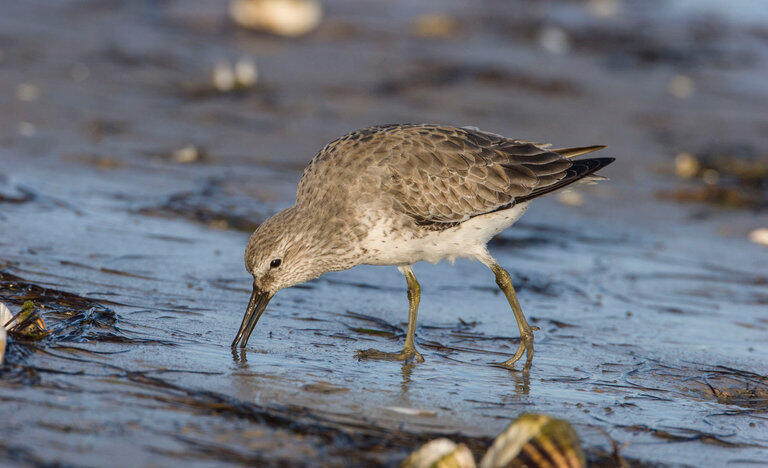Birds, plants, humans, and Earth, are being affected by climate change. We keep repeating the same words of the dangers of climate change, hoping that it becomes an issue to worry about. This matter, which affects all aspects in our daily lives, is not just the duty of world leaders to tackle, but it is also the duty of each one of us to try to solve in our daily lives.
A new bird species is immensely threatened by Climate change, a new study has shown. We will first list some details about the Red Know from BirdLife International, before listing details on the dangers facing it due to climate change.
Significant Decline
Red Knot, or Red Knot Calidris canutus, has been uplisted as “near threatened”, according to BirdLife International.
This bird almost meets the requirements for listing as threatened under criteria A2abc+3bc+4abc. According to Birdlife International, it has an extremely large range and six subpopulations across which trends are variable.
The population trend of the largest subpopulation, islandica, is unclear as is the trend of roselaari. Therufa and canutus subpopulations have both experienced population declines. Two subpopulations use the East Asian-Australasian Flyway and have experienced significant declines owing to loss of habitat in the Yellow Sea. Should new research resolve uncertainties in the trends of several of these subpopulations the species may warrant uplisting or downlisting.
Identification
Birdlife International identifies the bird according to the following: 23-25 cm wader. Breeding adult has rich rusty chestnut underparts with blackish-pale/rufous chestnut upperparts. Female has white feathers on underpart and more white on rear belly. Non-breeding adult pale grey above with narrow white fringes on larger feathers, underparts white, with grey barring on breast and flanks (Van Gils and Wiersma 1996). Juvenile somewhat similar to non-breeding adult. Similar spp. Resembles Great Knot C. tenuirostris but larger and rump white barred grey appearing uniform grey with rest of upperparts, and white wingbar more marked.
Chicks Hatching too Late
Scientists are now saying that Red knots, a type of bird that makes one of the longest annual migrations, are shrinking because climate change in their Arctic nesting grounds makes life harder during their winters in Africa.
According to the Scientists’ report on Thursday, Many red knot chicks are hatching too late, due to snow melting earlier (in Spring) in Arctic Russia. So, the chicks are hatching too late for the annual peak of insect food spurred by the thaw.
Food Shortage… Death
Imagine not being able to dig for your food. This is what’s happening to the birds. They are not able to grow larger, due to food shortage. They are not even able to dig up their favored shellfish that live deep in tidal mudflats in wintering grounds in Mauritania. Why? Simply because shorebirds, known for the males’ reddish plumage, grow up smaller with shorter bills.
Eighty percent of the birds born in Russia with long beaks survived to adulthood against just 40 percent of the short-beaked red knots, which end up eating roots of sea grasses in Africa that are less nutritious than shellfish, the study found.
“It’s worrying … we speculate that this is a very general problem” for Arctic migratory birds, lead author Jan van Gils of the Royal Netherlands Institute for Sea Research told Reuters of the findings published in the journal Science.
Many Creatures Shrinking
33 years of satellite data of snows and observations of the size and feeding habits of thousands of birds, were drawn on in yesterday’s study, which was conducted by researchers in the Netherlands, Australia, France, Poland and Russia.
The study suggested that red knots may evolve to have smaller bodies, with big bills. Red knots were also flying slightly earlier to the Arctic, but not soon enough. In Africa “they lack the cues of an earlier Arctic summer,” van Gils said.
Many other types of creatures might shrink, and begin having smaller bodies, because these types of bodies can get rid of extra heat more easily than big bodies.
What is the next living thing climate change will affect? Let’s just act before hearing the next news.











